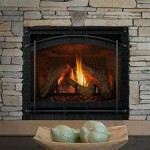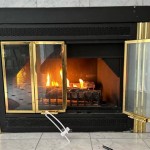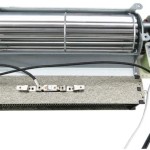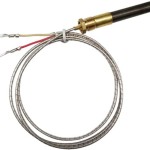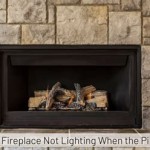Gas And Wood Burning Fireplaces: A Comparative Overview
Fireplaces have long served as both functional heating sources and aesthetic focal points in homes. The choice between a gas fireplace and a wood-burning fireplace is a significant one for homeowners, impacting factors such as cost, convenience, environmental impact, and overall ambiance. This article will explore the key differences between these two types of fireplaces, providing a comprehensive overview to aid informed decision-making.
The fundamental distinction lies in the fuel source. Wood-burning fireplaces utilize solid wood as fuel, typically requiring manual loading and ignition. Gas fireplaces, conversely, operate on natural gas or propane, offering push-button or remote-controlled operation. This difference in fuel source has cascading effects on various aspects of fireplace ownership.
Operational Convenience and Maintenance
Gas fireplaces generally offer superior convenience. Ignition is instantaneous, often involving a simple switch or remote control. Flame height is adjustable, allowing for precise control over heat output. Extinguishing the fire is similarly straightforward, eliminating the need to wait for embers to cool. Maintenance requirements are relatively low, primarily involving annual inspections by a qualified technician to ensure proper gas line connections and burner functionality. Cleaning typically involves removing dust and debris from the burner area.
Wood-burning fireplaces, on the other hand, require more hands-on operation. Users must manually load wood, build a fire, and tend to it to maintain the desired flame. Achieving a consistent burn requires experience and attention. Extinguishing the fire involves allowing the wood to burn down completely or actively dousing the embers with water. Furthermore, wood-burning fireplaces generate ash, which must be regularly removed. Chimney sweeping is a crucial maintenance task, necessary to remove creosote buildup, a flammable byproduct of wood combustion. Failure to properly maintain a wood-burning fireplace can lead to chimney fires.
Heating Efficiency and Cost
While both gas and wood-burning fireplaces provide heat, their efficiency levels differ considerably. Traditional open-hearth wood-burning fireplaces are notoriously inefficient, with a significant portion of the heat escaping up the chimney. Modern wood stoves and fireplace inserts offer improved efficiency through closed combustion chambers and controlled airflow, but still require proper insulation and installation. The cost of heating with wood depends on the availability and price of firewood, which can fluctuate depending on location and season. Labor associated with sourcing, splitting, and stacking firewood is also a factor to consider.
Gas fireplaces offer varying levels of efficiency depending on the model. Direct-vent gas fireplaces, which draw air from outside the home and vent exhaust externally, are among the most efficient. Vent-free gas fireplaces, while convenient, are less efficient and require adequate ventilation in the room to prevent the buildup of harmful gases. The cost of heating with gas depends on local gas prices, which are typically more stable than firewood prices. Installation costs for gas fireplaces can be higher due to the need for gas line connections.
Environmental Impact
The environmental impact of gas and wood-burning fireplaces is a subject of ongoing debate. Wood-burning fireplaces release particulate matter and other air pollutants into the atmosphere, contributing to respiratory problems and smog. While burning seasoned wood reduces emissions compared to burning green wood, wood smoke remains a significant source of air pollution, especially in densely populated areas. Sustainable forestry practices can mitigate the environmental impact of wood burning by ensuring responsible harvesting and replanting of trees.
Gas fireplaces, while burning a fossil fuel, generally produce fewer emissions than wood-burning fireplaces. Natural gas combustion produces carbon dioxide, a greenhouse gas, but also releases less particulate matter and other pollutants. The extraction and transportation of natural gas, however, can have their own environmental consequences, including methane leakage, another potent greenhouse gas. Propane, as a byproduct of natural gas processing and crude oil refining, has a different environmental footprint.
Aesthetics and Ambiance
The aesthetic appeal and ambiance of a fireplace are often subjective considerations. Many homeowners prefer the traditional look and feel of a wood-burning fireplace, citing the crackling sound, the aroma of burning wood, and the visual appeal of the flame. The process of building and tending a fire can also be seen as a relaxing and engaging activity.
Gas fireplaces offer a modern and customizable aesthetic. Flame patterns and ember bed designs can be adjusted to mimic the look of a natural wood fire or to create a contemporary, minimalist look. The instant ignition and adjustable flame height provide a level of control that is not possible with wood-burning fireplaces. The lack of smoke and ash contribute to a cleaner and more convenient experience.
Ultimately, the choice between a gas and a wood-burning fireplace depends on individual priorities and preferences. Factors such as convenience, cost, environmental impact, and aesthetic considerations should all be carefully weighed before making a decision. Careful research and consultation with qualified professionals can help homeowners select the fireplace that best meets their needs.

Huntingdon 30 Gas Stoves Gazco Traditional

Stoves Wood Gas Pellet Lopi
Can I Convert My Wood Burning Fireplace To Gas Woodlanddirect Com

Fireplaces Inserts Wood Gas Fireplace Xtrordinair

Can You Convert A Gas Fireplace To Wood Burning Stove Direct Stoves Resources

Stoves Wood Gas And Pellet Sierra Hearth Home

The Best Gas Stoves Log Burners Direct
Converting A Wood Burning Fireplace Into Gas Heat Glo

Free Standing Gas Fireplace Stoves For 30 On Now

Yeoman Cl5 Contemporary Gas Stove Fireplace Supers
Related Posts

